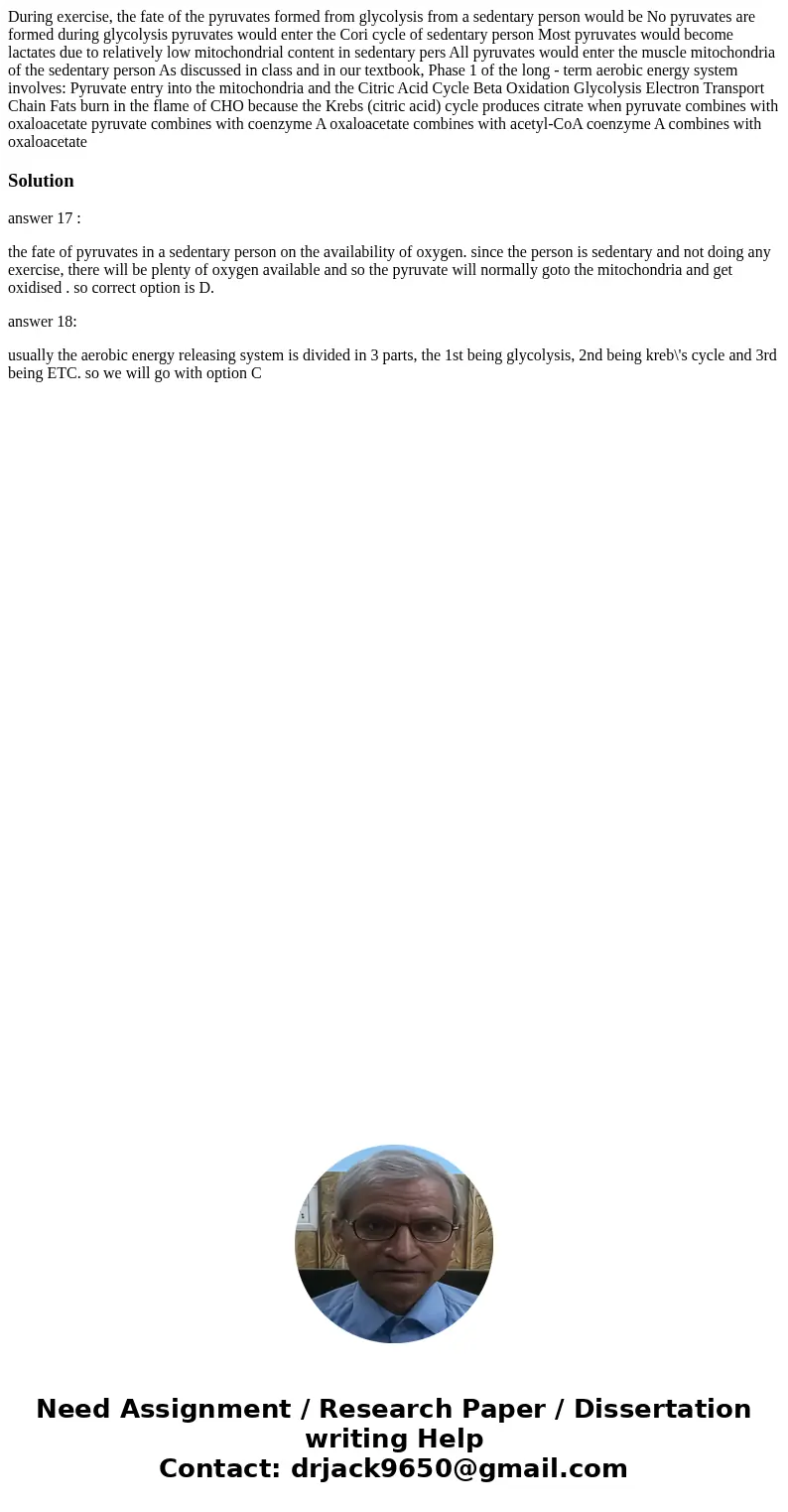During exercise the fate of the pyruvates formed from glycol
During exercise, the fate of the pyruvates formed from glycolysis from a sedentary person would be No pyruvates are formed during glycolysis pyruvates would enter the Cori cycle of sedentary person Most pyruvates would become lactates due to relatively low mitochondrial content in sedentary pers All pyruvates would enter the muscle mitochondria of the sedentary person As discussed in class and in our textbook, Phase 1 of the long - term aerobic energy system involves: Pyruvate entry into the mitochondria and the Citric Acid Cycle Beta Oxidation Glycolysis Electron Transport Chain Fats burn in the flame of CHO because the Krebs (citric acid) cycle produces citrate when pyruvate combines with oxaloacetate pyruvate combines with coenzyme A oxaloacetate combines with acetyl-CoA coenzyme A combines with oxaloacetate
Solution
answer 17 :
the fate of pyruvates in a sedentary person on the availability of oxygen. since the person is sedentary and not doing any exercise, there will be plenty of oxygen available and so the pyruvate will normally goto the mitochondria and get oxidised . so correct option is D.
answer 18:
usually the aerobic energy releasing system is divided in 3 parts, the 1st being glycolysis, 2nd being kreb\'s cycle and 3rd being ETC. so we will go with option C

 Homework Sourse
Homework Sourse